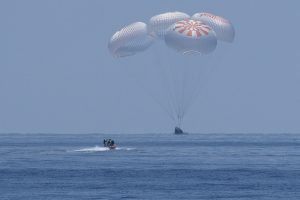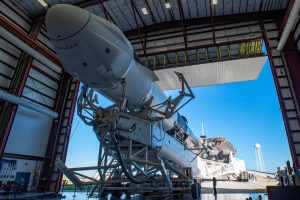SpaceX is in the initial phase of developing its Mars launch vehicle, Starship. It will be a giant stainless steel spaceship capable of carrying one hundred passengers on long journeys. SpaceX conducted yet another low-altitude test flight of a Starship concept in South Texas September 3rd. The spacecraft named Starship SN6 soared 150-meter above the sunny sky of Boca Chica beach, powered by a single Raptor engine; SN6 deployed a set of six legs to execute a safe landing on a nearby pad. Residents captured the incredible feat which demonstrated SpaceX’s engineering talent shown below.
This launch of the ‘hop’ test comes after an earlier SN5 prototype had a successful flight less than a month ago. The company aims at making Boca Chica routine for flying Starship test vehicles. Each test flight will give engineers insight into the power of the Raptor engine and the design of the spacecraft. Each test is bringing SpaceX one step closer to the development of a space-ready Starship. The aerospace company is aiming at flying as many as twenty Starship designs in Texas, each featuring minor adjustments to enhance the craft. SpaceX already has many Starships under construction at the rocket factory which is less than five miles down the road of the launch pad.
In comparison to the cylinder prototype that took off this afternoon, the next flying prototype, SN8, will be a fully built vehicle with a nose cone and a collection of aerodynamic fins that mimic the company’s proposed spacecraft design. A trio of Raptor engines will enable Starship SN8 to perform a test flight at a higher altitude of about 20 kilometres.
SpaceX founder Chief Engineer Elon Musk says Starship is ‘key to preserving the light of consciousness’ and accumulates assets on Earth to create a Starships fleet that will allow people to live on the Red Planet. During a recent Humans To Mars conference, Musk shared SpaceX aims to launch Starship to orbit next year. “We’re making good progress. The thing that we’re really making progress on with Starship is the production system.” Musk told the host of the conference. “The thing that really impedes progress on Starship is the production system … A year ago, there was almost nothing there and now we’ve got quite a lot of production capability. So, we’re rapidly making more and more ships.”
“I hope we do a lot of flights. The first ones might not work. This is uncharted territory,” he added, “Nobody’s ever made a fully reusable orbital rocket.” Engineers aim to develop a Starship capable of being as reusable as airplanes.
“Given enough time SpaceX will get to Mars,” Musk stated. “We’ve got to build upon a Mars base and then we’ve got to build a city and get to the point where it’s self-sustaining.” SpaceX will perform ‘hundreds’ of satellite deployments to ensure the spacecraft is secure before sending humans to Mars. Then plans to launch a cargo-carrying Starship in 2022. If the mission is successful, the target date for the first humans to be sent to the Red Planet is 2024.
Reported by Tesmanian.
Want to buy a Tesla Model 3, Model Y, Model S, or Model X? Feel free to use my referral code to get some free Supercharging miles with your purchase: http://ts.la/guanyu3423
You can also get a $100 discount on Tesla Solar with that code. Let’s help accelerate the advent of a sustainable future.





